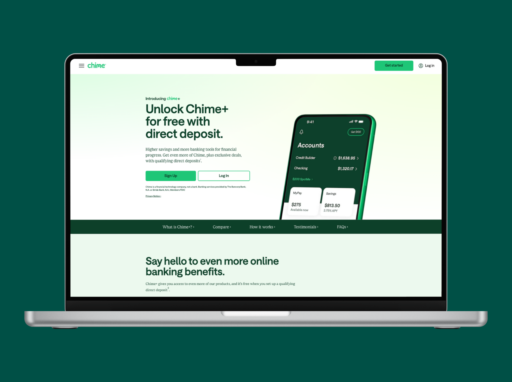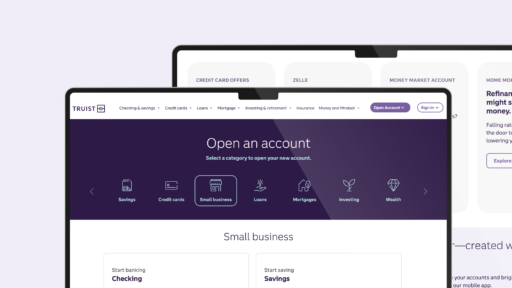Most big banks just aren’t cutting it anymore. The fees, the impersonal service, the hoops you have to jump through just to speak to someone when something goes wrong… It’s exhausting.
That’s why more and more people are moving their money to credit unions. And we get it; on the surface, credit unions can seem old-school or even a little confusing. But once you actually look into them, a lot of them offer better rates, lower fees, and an overall experience that just feels more human.
So, if you’re thinking about making a switch this year, here’s a breakdown of the best credit unions in 2025: what they offer, who they’re best for, and how to join (because yes, membership rules still apply).
Table of Contents
What Actually Makes a Credit Union “The Best”?
To make this list, we looked for credit unions that do at least a few of these things really well:
- Offer solid interest rates on savings and low rates on loans
- Have little-to-no fees (especially on checking and overdrafts)
- Are open to a wide range of members, not just locals
- Have decent mobile banking and digital tools
- Actually treat people like people
Alright, let’s get into it.
Wallet Monkey’s Top Picks for the Best Credit Unions of 2025
1. Navy Federal Credit Union
Best for: Military members and their families
Navy Federal is massive; over 13 million members, and there’s a reason so many military families trust them. They consistently offer low rates, solid service, and some of the best loan products out there if you qualify.
Navy Federal CU Benefits:
- Great rates on auto loans and mortgages
- 24/7 customer service (rare for credit unions)
- Easy-to-use app + lots of ATMs
- Strong support for veterans and active-duty service members
Who can join: You need to be affiliated with the military, DoD, or a family member of someone who is.
2. Alliant Credit Union
Best for: Online banking and high-yield savings
If you’re looking for a credit union that feels more like a digital bank, Alliant is one of the best. You don’t need to live near a branch; they’re all about online banking, and they’re actually good at it.
Alliant CU Benefits:
- 3.10% APY on their high-rate savings
- No monthly fees or overdraft charges
- Great mobile experience
- Huge free ATM network
Who can join: Anyone, just join a partner nonprofit (they’ll even cover the $5 donation for you).
3. PenFed Credit Union
Best for: Low loan rates and easy eligibility
PenFed (short for Pentagon Federal) used to be military-only, but now it’s open to everyone. If you’re shopping around for a personal loan, credit card, or mortgage, it’s worth a look.
PenFed Credit Union Benefits:
- Competitive rates on loans and credit cards
- No annual fees on most accounts
- Big focus on home and auto lending
- Solid nationwide access
Who can join: Anyone can sign up online; no military connection needed anymore.
>>> Read More: 2025 PenFed Credit Union Review
4. First Tech Federal Credit Union
Best for: Tech professionals (or anyone who thinks like one)
If you work in tech or just want a credit union that feels a bit more modern, First Tech is built for you. They work closely with companies like Amazon, Microsoft, and Google, and they understand the needs of people working in fast-paced industries.
First Tech Federal Credit Union Benefits:
- Financial tools built for stock options, equity, and retirement planning
- Competitive mortgage and HELOC rates
- Nice balance between digital tools and human help
Who can join: If you work at a partner company or join a qualifying nonprofit, you’re in.
5. Consumers Credit Union
Best for: Earning actual money on checking
Consumers Credit Union has one of the best checking accounts in the country, no joke. You can earn up to 5.00% APY, which you just don’t see from most banks (or even other credit unions).
Consumers CU Benefits:
- High APY on checking if you meet monthly requirements
- No monthly fees
- Nationwide access
- Strong digital banking platform
Who can join: Anyone can join with a $5 donation to their partner group. Simple.
6. SchoolsFirst Federal Credit Union
Best for: Teachers and school employees in California
This one’s a little more niche, but if you work in education, especially in California, SchoolsFirst is one of the best. It’s made specifically for school staff, and it shows.
SchoolsFirst Federal CU Benefits:
- Special products for educators, like summer saver accounts
- Loans for classroom needs
- Very member-focused customer service
- Local branches throughout California
Who can join: Must be a school employee (or family member) in CA.
7. Connexus Credit Union
Best for: Digital banking + high-yield checking
Connexus is another one of those credit unions that feels like a modern bank, but with credit union values. Their checking account pays up to 4.00% APY, which is pretty incredible.
Connexus CU Benefits:
- Free checking with a strong interest rate
- No BS fees
- Great mobile and desktop experience
- Easy-to-access customer support
Who can join: Available nationwide; just join their partner organization for a small donation.
8. America First Credit Union
Best for: Utah/Nevada/Western U.S. members
If you’re out west, especially in Utah or Nevada, America First has been a go-to for decades. It’s not flashy, but it gets the job done, especially if you want low-rate loans.
America First Credit Union Benefits:
- Low-interest rates on car and RV loans
- Simple products that work
- Good customer service and fraud protection
- Long history in the region
Who can join: Live, work, or worship in eligible areas, or have a relative who’s a member.
9. State Employees’ Credit Union (SECU)
Best for: North Carolina public employees
SECU has been around forever, and it’s the backbone of banking for many people in NC. If you work for the state, this is where your coworkers probably already bank.
SECU Benefits:
- Transparent, fixed-rate loans
- Local service you can actually count on
- Low-fee, no-frills approach
- Offers financial counseling and tax prep
Who can join: State employees, public school workers, and their families in NC.
10. BECU (Boeing Employees Credit Union)
Best for: Pacific Northwest locals
Originally for Boeing employees, BECU is now open to the broader community, and if you’re in Washington, Oregon, or Idaho, it’s one of the best options around.
BECU Benefits:
- No fees on most accounts
- Low rates on auto loans, mortgages, and credit cards
- Financial education tools + strong mobile app
- Deep roots in the community
Who can join: Live or work in eligible counties or have a Boeing connection.
Final Thoughts: Are Credit Unions Better?
If you’re still with a big bank and feeling underwhelmed, a credit union could be the upgrade you didn’t know you needed. The best credit unions today are digital-friendly, open to more people than ever, and focused on actually helping their members succeed.
You don’t have to sacrifice convenience or features. And if better loan rates, lower fees, and real customer service sound good to you, this is your sign to look closer.
Also, keep in mind, this is a list of general great Credit Unions in the U.S. There are plenty of amazing CU’s in your local area that you could find through a quick search.
>>Learn More: Credit Union vs Bank: How to Decide Which Is Right for You in 2025
FAQs About Best Credit Unions of 2025
1. What credit union is best to join?
It depends on your needs. Navy Federal is great for military families, Alliant is solid for online banking, and PenFed is open to almost everyone.
2. What are the top 5 credit unions in the US?
Navy Federal, PenFed, Alliant CU, BECU, America First Credit Union. These stand out for size, rates, and overall customer service/experience.
3. Are credit unions actually better than banks?
Often, yes. Credit unions usually offer lower fees, better rates, and more personal service. But banks might have more branches and better apps.
4. Can anyone join a credit union?
Not always, but many are open to the public or allow you to join by making a small donation.
5. Do credit unions offer better interest rates?
Yes, credit unions typically beat banks on savings and loan rates because they’re not-for-profit.






